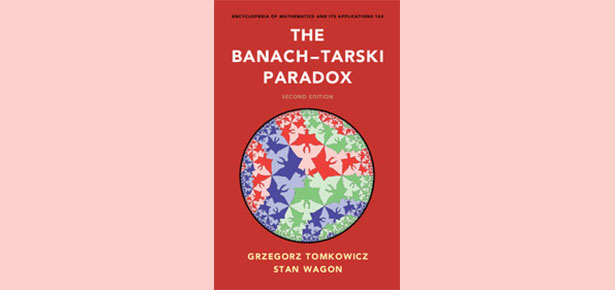Assuming the axiom of choice leads to some weird consequences, among them the Banach–Tarski paradox that one can partition a three-dimensional set of fixed volume (a unit ball, say) into pieces that can be reassembled into a different three-dimensional set of different volume (two unit balls). But Stan Wagon argues in this post that the alternatives are at least as weird. If you insist, instead, that all sets of real numbers are (Lebesgue) measurable, then you must also accept the inequality |ℝ| < |ℝ/ℚ| where equivalence by addition of rationals somehow partitions the reals into more sets than there are individual real numbers to fill those sets.
For more details see Wagon's preprint http://stanwagon.com/public/TheDivisionParadoxTaylorWagon.pdf with Alan F. Taylor. The actual theorems on which this is based are older: they came from Sierpiński in 1916 and Mycielski in 1964.
Wagon takes this as evidence that the correct axiom system to use is ZFC, not because ZFC describes the "real" mathematical world (whatever that means), but because it is "obvious" (whatever that means) that no set should have a partition into more subsets than its own cardinality, and ZFC implies this. I'm still not convinced that it's necessary to choose an axiom system and call it the correct one, though; why not just use whatever axioms are most convenient for the kind of mathematics you're doing and let the reverse mathematics people (https://en.wikipedia.org/wiki/Reverse_mathematics) sort out which set theories your results apply to and which they don't?
Accept the Banach Tarski Paradox | FifteenEightyFour | Cambridge University Press

However, it does give me the creeps to know that the cardinality of a quotient set can be greater than the set it's a quotient of, if we drop the axiom of choice. I've never looked into the theory of cardinality in ZF without the C. If not every epimorphism splits the resulting category doesn't feel like a category of "sets" to me, but rather objects of some more general kind of topos, and I don't even know what the theory of cardinalities is like in topos theory.
> Theorem 2 (Sierpiński, 1916). In ZF + LM, |R| ≰ |R / Q|.
But then they say that
> 4. |R| < |R / Q|
were the only remaining possibility for ZF + LM. But if it's not less or equal, how can it be less?
"Let A be a set and let B be an initial ordinal. If G̅(A,B) is x-colorable for some x < B, then |A| < B (and so A is well-orderable)." Here G̅(A,B) is the graph whose vertices are pairs from AxB and which has edges between all vertices such that they do not share an A or a B.
It seems to me that this may require a nonconstructive property of ordinals to work out right? (it certainly takes place with an assumption of the usual injective ordering). I don't know enough about ordinals within a constructive setting to really say one way or the other for sure though....
Theorem 2 (Sierpiński, 1916). In ZF + LM, |R| ≰ |R / Q|.
It should have been
Theorem 2 (Sierpiński, 1916). In ZF + LM, |R / Q| ≰ |R|.
The blog has now been fixed by C.U.P.
Stan Wagon